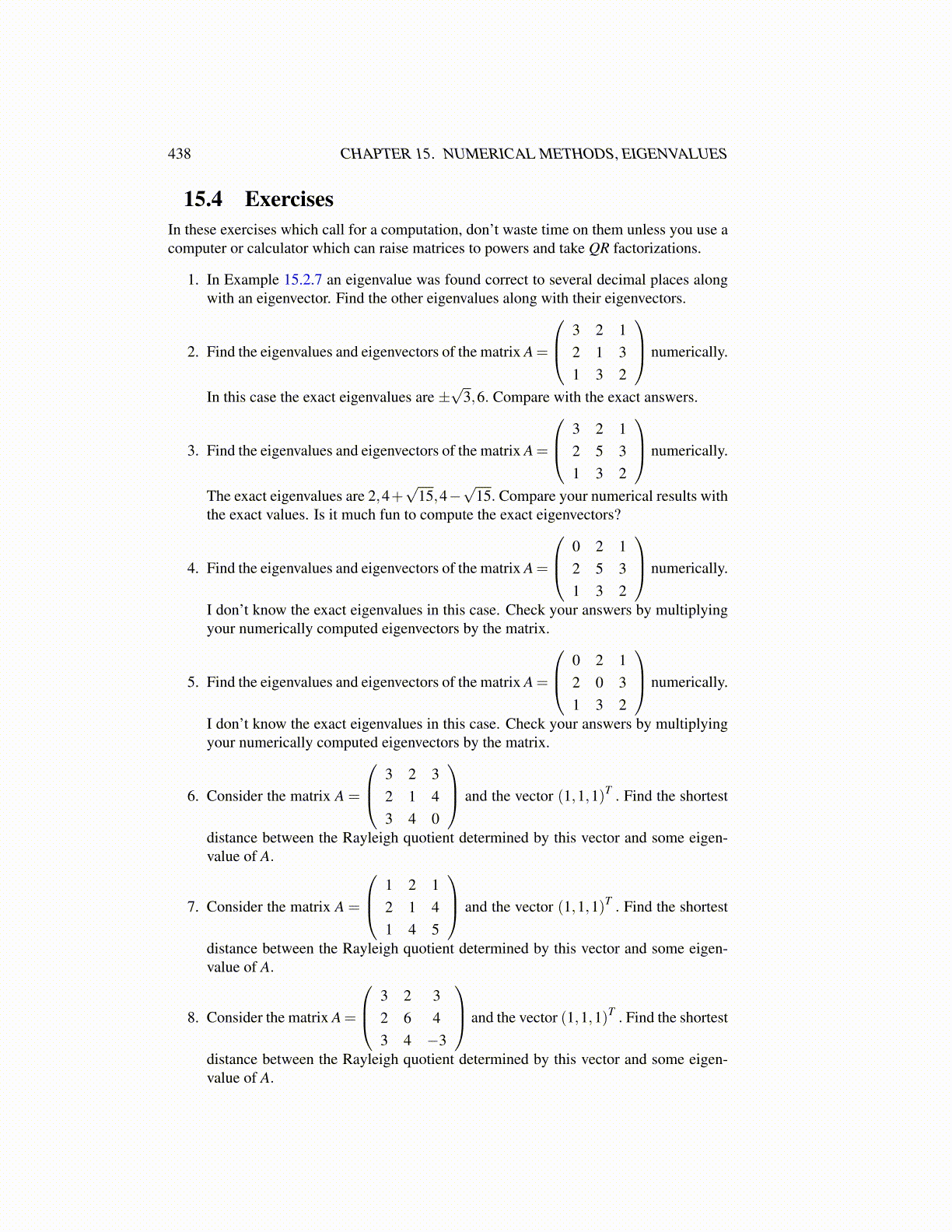
438 CHAPTER 15. NUMERICAL METHODS, EIGENVALUES
15.4 ExercisesIn these exercises which call for a computation, don’t waste time on them unless you use acomputer or calculator which can raise matrices to powers and take QR factorizations.
1. In Example 15.2.7 an eigenvalue was found correct to several decimal places alongwith an eigenvector. Find the other eigenvalues along with their eigenvectors.
2. Find the eigenvalues and eigenvectors of the matrix A=
3 2 12 1 31 3 2
numerically.
In this case the exact eigenvalues are ±√
3,6. Compare with the exact answers.
3. Find the eigenvalues and eigenvectors of the matrix A=
3 2 12 5 31 3 2
numerically.
The exact eigenvalues are 2,4+√
15,4−√
15. Compare your numerical results withthe exact values. Is it much fun to compute the exact eigenvectors?
4. Find the eigenvalues and eigenvectors of the matrix A=
0 2 12 5 31 3 2
numerically.
I don’t know the exact eigenvalues in this case. Check your answers by multiplyingyour numerically computed eigenvectors by the matrix.
5. Find the eigenvalues and eigenvectors of the matrix A=
0 2 12 0 31 3 2
numerically.
I don’t know the exact eigenvalues in this case. Check your answers by multiplyingyour numerically computed eigenvectors by the matrix.
6. Consider the matrix A =
3 2 32 1 43 4 0
and the vector (1,1,1)T . Find the shortest
distance between the Rayleigh quotient determined by this vector and some eigen-value of A.
7. Consider the matrix A =
1 2 12 1 41 4 5
and the vector (1,1,1)T . Find the shortest
distance between the Rayleigh quotient determined by this vector and some eigen-value of A.
8. Consider the matrix A=
3 2 32 6 43 4 −3
and the vector (1,1,1)T . Find the shortest
distance between the Rayleigh quotient determined by this vector and some eigen-value of A.